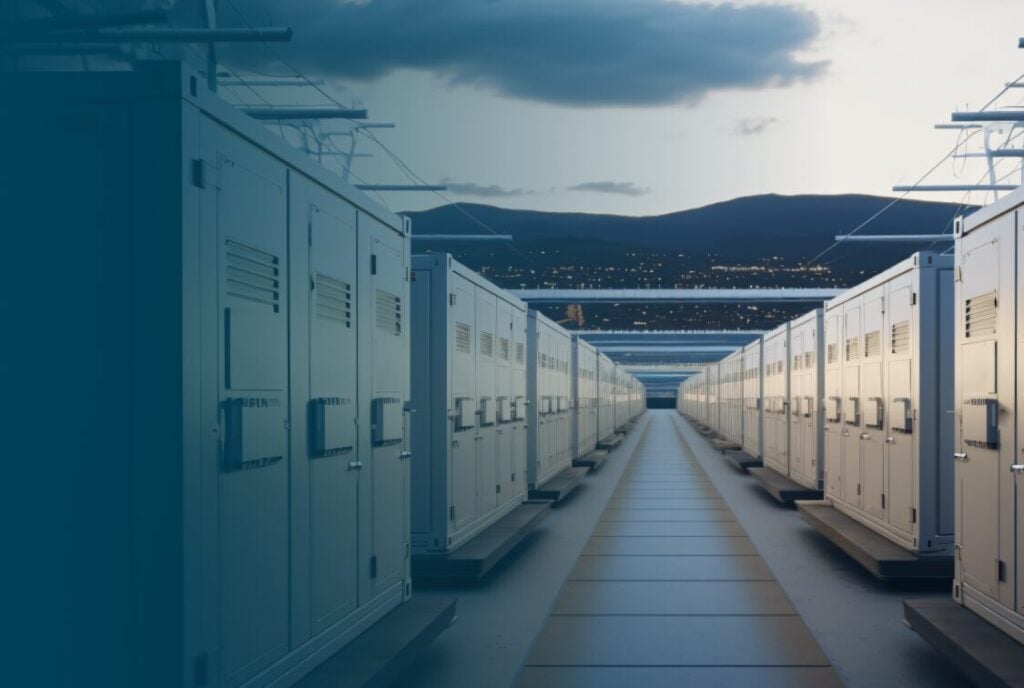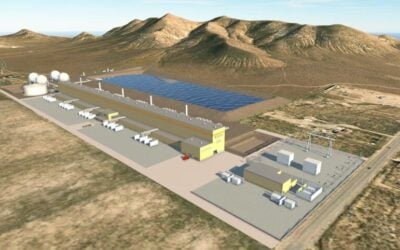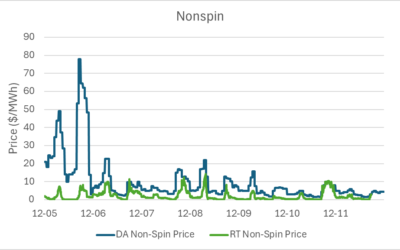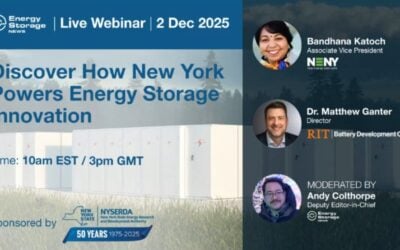
Flatiron Energy has commenced initial proceedings to construct a 168MW/672MWh BESS at the site of a former coal-fired power plant located in Bristol County, Massachusetts.
The company’s vice president of development, Erin Baker, outlined the company’s intentions for the site during a recent Town of Somerset Board of Selectmen meeting.
Headquartered in Boulder, Colorado, Flatiron is a specialist BESS developer targeting the three biggest electricity markets located in the northeastern US: PJM Interconnection, ISO New England and the New York Independent System Operator (NYISO).
The developer claims to have built an approximately 16GWh battery storage pipeline since its founding in 2021, and set itself the target of bringing 1GW of BESS online before the end of 2027.
Try Premium for just $1
- Full premium access for the first month at only $1
- Converts to an annual rate after 30 days unless cancelled
- Cancel anytime during the trial period
Premium Benefits
- Expert industry analysis and interviews
- Digital access to PV Tech Power journal
- Exclusive event discounts
Or get the full Premium subscription right away
Or continue reading this article for free
Coal to BESS along the Taunton River
As outlined in the recent presentation for the local community, Flatiron is proposing to construct a 168MW BESS, known as Salt Cod Storage, at the former coal-fired Montaup Power Plant located along the west bank of the Taunton River in Somerset, Massachusetts.
After first opening in 1925, the fossil fuel plant operated until 2010 when it was retired by its most recent owners, NRG Energy.
With the plant’s closure having had a huge impact on the Town of Somerset in terms of job losses and reduced tax revenue, local officials have identified the revitalisation of the site as an area of huge priority.
Despite the site’s importance for the future of Somerset, the plant has lain dormant for the past fifteen years. During the recent meeting, Community Engagement Specialist, Dugan Becker, explained this was due to the site’s “complex” and “industrial” nature.
Over the past fifteen years, several organisations, such as the US Economic Development Association and the Massachusetts Department of Energy Resources, have carried out re-use studies aimed at figuring out how best to reinvigorate the Montaup site.
“The consensus among those investigations is that site re-use options are somewhat limited … but repowering the site through clean energy is one of the most optimal uses,” explained Becker.
If Flatiron’s Salt Cod BESS were to move forward, the developer would carry out an extensive remediation project to clean up the shuttered coal infrastructure.
The news coincides with Flatiron Energy tying up with South Korean lithium-ion OEM for 7.2GWh of BESS equipment for its projects in New England and elsewhere through 2030, announced last week. That partnership starts with a 1GWh order for a project in Massachusetts, on which shipments will start in H2 2026, a separate one to Salt Cod, based on that timeline.
Utilising existing transmission infrastructure
During the meeting, Baker explained that the project’s 168MW of BESS capacity size is mostly “driven by what is available on the existing transmission infrastructure.”
Flatiron is expected to connect the project to the ISO New England electricity grid via a 115kV transmission line connecting to the National Grid’s Pottersville substation.
The developer hopes to obtain an interconnection agreement to connect the project to the grid by the end of next year, with the target of bringing the facility online sometime during the fourth quarter of 2028.
Alongside completing interconnection studies, Baker explained that the permitting process for the project is also likely to take some time to complete.
Following the passing of a 2024 bill from State Governor Maura Healey, the permitting process for standalone energy storage projects in Massachusetts is currently undergoing a huge overhaul.
From July next year, developers of BESS projects larger than 100MWh will have the option to obtain construction approval from the State’s Energy Facilities Siting Board (EFSB), as opposed to locally administered planning processes.
However, with the specifics of the state-administered process yet to be announced, Baker confirmed that Flatiron intends to obtain construction approval for its Salt Cod project with local officials.
Flatiron’s director of fire protection and safety, Chris Groves, also spoke at the recent meeting and revealed that the company was still “very early in the site design process” and has yet to select a specific battery supplier for the site.
Prior to joining Flatiron, Groves spent over four and a half years with systems integrator and BESS supplier Wartsila.
Despite being in such an early phase of development, Flatiron is already working closely with local fire department staff who have already provided “some very valuable insights,” according to Becker.
Ahead of submitting a formal permitting application, the developer plans to hold a series of public consultation events to gather feedback on their initial proposal.
1.2GWh BESS development paused in Boston
As reported by Energy-Storage.news, Flatiron is developing another larger 300MW/1.2GWh BESS located in the Boston neighbourhood of Brighton, Massachusetts, known as project Lite Brite.
However, despite receiving authorisation from ISO New England to connect the project to the grid, the developer has asked the Boston Planning and Development Agency (BPDA) to pause further review of the project.
According to a letter addressed to the BPDA obtained by Energy-Storage.news, Flatiron has decided to wait until the publication of the agency’s incoming BESS safety regulations before determining its next steps.
“As we respect and hear our neighbours in Brighton and their very real concerns for the safety of this facility, we are proactively suspending our process while final safety regulations are enacted,” explained chief development officer Brett Cullen within the recent letter.
Cullen said that the company looked forward to sharing the scientific work it had already carried out that demonstrated the minimal impact to the community in the event of any “adverse scenario.”
The move could be in light of the huge Moss Landing BESS fire in January, formerly the largest in the world. Having been deployed in the early stages of the US BESS industry, it had a relatively rare indoor configuration, and most commentators have said the fire event makes indoor installations of that scale unlikely going forward.





